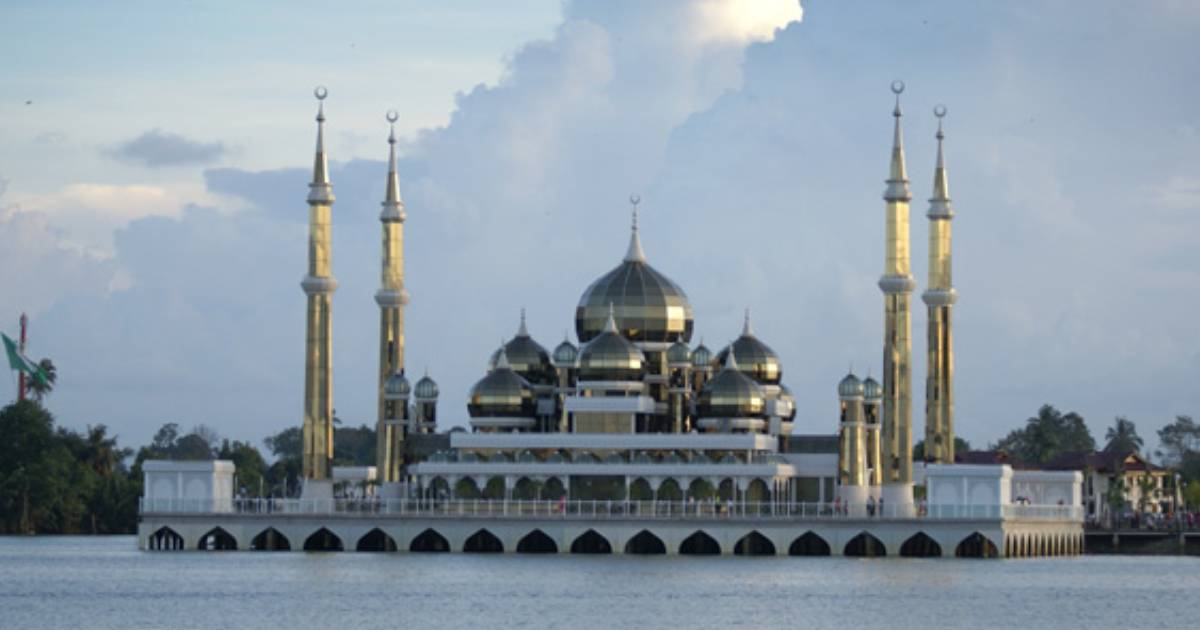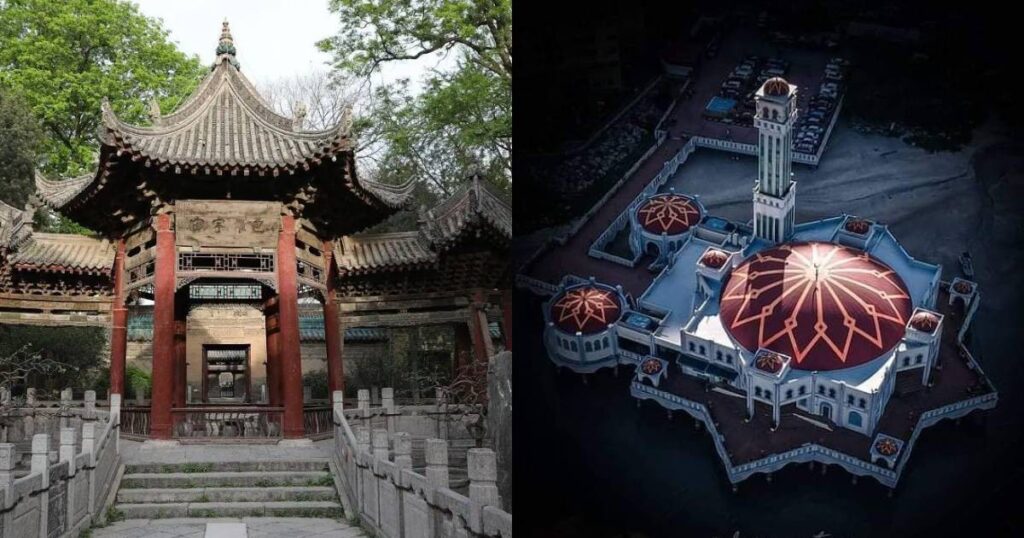Some places don’t just sit there, waiting to be admired, they grab you by the collar and demand your attention. The kind that makes you stop mid-step, blink a few times, and whisper, No way, this is real? That’s exactly the feeling these mosques give. They’re more than just places of worship; they’re mind-blowing architectural gems, packed with history and culture.
From mosques that are floating to ones that glow like crystal palaces, each of these houses of worship has its own magic. But all of them? Absolutely worth the visit.
Floating Mosque, Penang, Malaysia
You’ve definitely heard of floating markets in Thailand, right? And maybe even floating villages in Cambodia. There’s a lot of cool stuff that floats already, but now it’s time for a floating mosque.
Now, don’t let your brain spiral, this mosque in Tanjung Bungah, Penang isn’t actually floating. It just messes with your eyes a bit because it’s built on concrete structures over the water. When the tide’s high, boom, looks like it’s straight-up hovering on the sea.
Imagine standing there, sea breeze hitting your face, the sound of waves in the background, and the call to prayer echoing from that seven-story minaret.
The mix of Middle Eastern and local architecture means it’s got that grand, elegant look but still feels very much like it looks very much home in tropical Malaysia. Inside, it’s just as stunning, fitting up to 1,500 people at a time.
The Crystal Mosque, Kuala Terengganu, Malaysia

The next mosque on the list is ridiculously gorgeous, and absolutely one of the most stunning in Malaysia… or maybe the world.
Perched right on the Terengganu River, the Crystal Mosque is a next-level, full-on architectural statement. Built from steel, glass, and crystal, it glows and reflects light under the sun, and shimmers when night falls. The locals swear it looks like it’s straight out of a fairytale when it lights up.
Opened in 2008 as part of Taman Tamadun Islam, this place is not just for show. Inside, the frosted glass windows and delicate calligraphy give it a serene, dreamlike atmosphere. The prayer hall fits up to 700 people, fully air-conditioned because no one wants to be sweating through their salah.
The Great Mosque of Xi’an, China
Next stop: the Great Mosque of Xi’an aka the mosque that throws every “what-a-mosque-should-look-like” idea out the window. Built back in 742 AD during the Tang Dynasty, this place is one of the oldest and best-kept mosques in China. Don’t expect your usual domes and minarets; this one’s got full-on Chinese architecture blended with Islamic influences.
This place is huge: We’re talking 12,000 sq m of courtyards, gardens, and historic gems. Step into the first courtyard, and please your eyes with a massive wooden arch, nine meters tall, rocking 17th-century glazed tiles like it’s showing off.
Wander further, and you’ll hit the second courtyard, where a stone arch stands guard with two ancient steles. These aren’t just random old carvings, they’re calligraphy masterpieces from famous Song and Ming dynasty artists.
Keep going, and you’ll reach the Xingxin Tower in the third courtyard, where Muslims gather for prayer events. The Prayer Hall in the fourth courtyard is the real star here. This place is decked out in colorful patterns and can fit up to 1,000 worshippers. Five prayer sessions go down here every day, from sunrise to late at night.
The Red Mosque of Jami-Ul-Alfar, Colombo
If we say “bricks” or “pixelated,” what pops into your head? Minecraft? Lego? Now imagine that but as a real-life architectural masterpiece. That’s the Jami Ul-Alfar Mosque for you. With its bold red-and-white stripes stacked in hypnotic patterns, it doesn’t just stand in Colombo’s crowded Pettah district, it dominates the space.
Built in 1908, this mosque was the brainchild of Habibu Labbe Saibu Labbe, blending Indo-Saracenic, Gothic, and Neo-Classical styles into something truly one of a kind.
Funded by the city’s Indian Muslim community, it quickly became more than a place of worship. According to popular local anecdotes, sailors back in the day would use its minarets as a landmark to guide their ships into Colombo’s port.
Outside of the mosque, Pettah vibrates with pure frenzy from its packed streets, blaring tuk-tuks, and markets overflowing with everything from spices to fabrics. Step inside and the atmosphere shifts completely. The noise fades, the air cools, and intricate patterns surround you, making it impossible not to pause and take it all in.
Non-Muslim visitors are welcome outside of the prayer times, so long they dress modestly: long sleeves, full-length pants, and for women, a headscarf.
[[nid:716110]]
This article was first published in Wego.
Read the full article here


